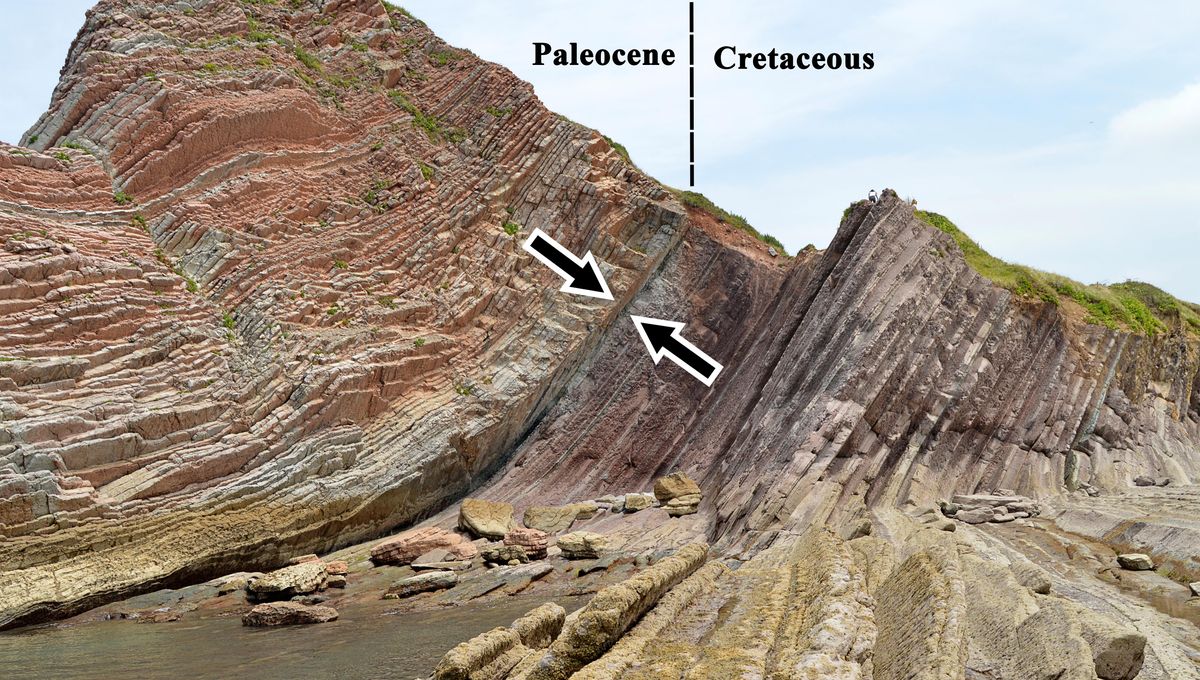
Earth’s long history has seen an uncountable number of species come and go – but one of the most famous extinction events we know of is the one related to the dinosaurs. This event occurred across the world and witnessed the loss of around 75 percent of all species of animals during a very narrow point of time – the boundary between the Cretaceous and Paleogene periods (around 66 million years ago).
One of the ways that we know about this extraordinary event comes from what is known as the Cretaceous-Paleogene (K-Pg) boundary, formerly the Cretaceous-Tertiary (K-T) boundary. This geological signature consists of a thin layer of sediment found across the planet in both marine and terrestrial rocks; it is often identified by the sharp, almost dramatic, change in the types of fossils it contains when compared to the layers above and below it.
Another significant feature of the K-Pg boundary is the fact that it is enriched with iridium, an element that is rarely found on Earth, but is far more common in asteroids or comets. This led to the formation of the asteroid impact hypothesis (otherwise known as the Alvarez hypothesis), which suggests the K-Pg extinction event was caused by the impact of some extraterrestrial object hitting the planet. The idea was first proposed in 1980 by physicist Luis Alvarez; his son, the geologist Walter Alverez; and their colleagues after they noticed the high levels of iridium in this layer.
The team proposed that the global distribution of iridium in this layer could only be explained by a massive asteroid or comet that struck the Earth and scattered its debris across the planet. In doing so, the immediate devastation and then its secondary effects led to the deaths of all non-avian dinosaurs, as well as marine reptiles, ammonites, pterosaurs, and many species of plants and plankton.
The Alvarez hypothesis was controversial when it was first proposed, but the discovery of the Chicxulub crater in the 1990s gave it significant support. This crater is located on the Yucatán Peninsula in Mexico and is thought to have been created by an asteroid that was between 6 and 9 miles (10 and 15 kilometers) wide and traveling so quickly that it created a crater 93 miles (150 kilometers) in diameter.
In 2016, an ambitious drilling expedition successfully drilled into the impact crater and, from their analysis, it was concluded that the asteroid hit the worst possible place it could. According to their research, the asteroid vaporized colossal volumes of sulfur from mineral gypsum in the shallow waters and sent it into the atmosphere, where it extended a global winter that followed the initial blast.
This is why the K-Pg boundary is so important. It marks the time when this cataclysmic event occurred, when the age of reptiles (dinosaurs) ended, and the rise of mammals began. Eventually, the species that survived this event evolved and created the modern ecosystem we live in today.
Source Link: Why Is The K–Pg Geological Boundary So Important?